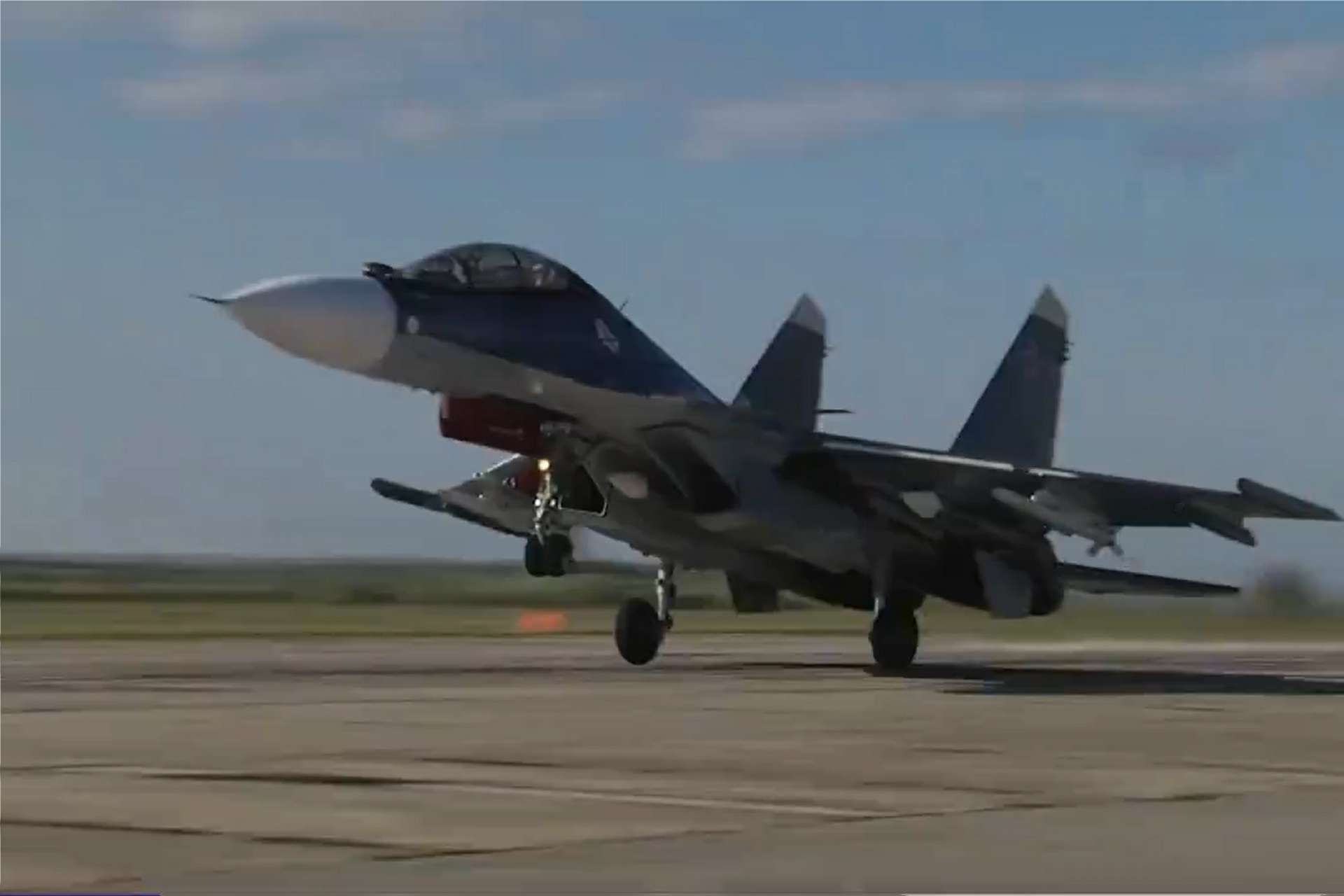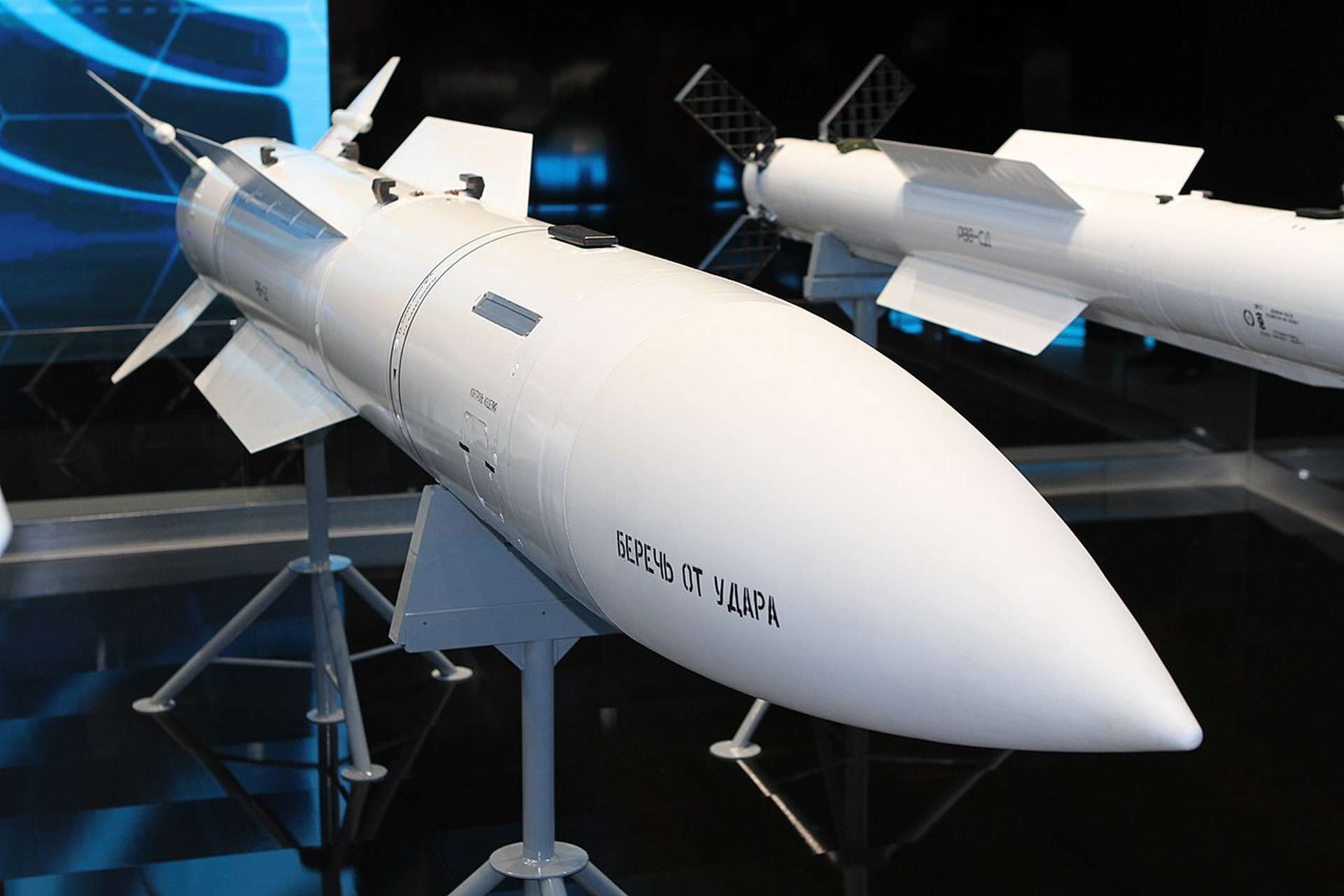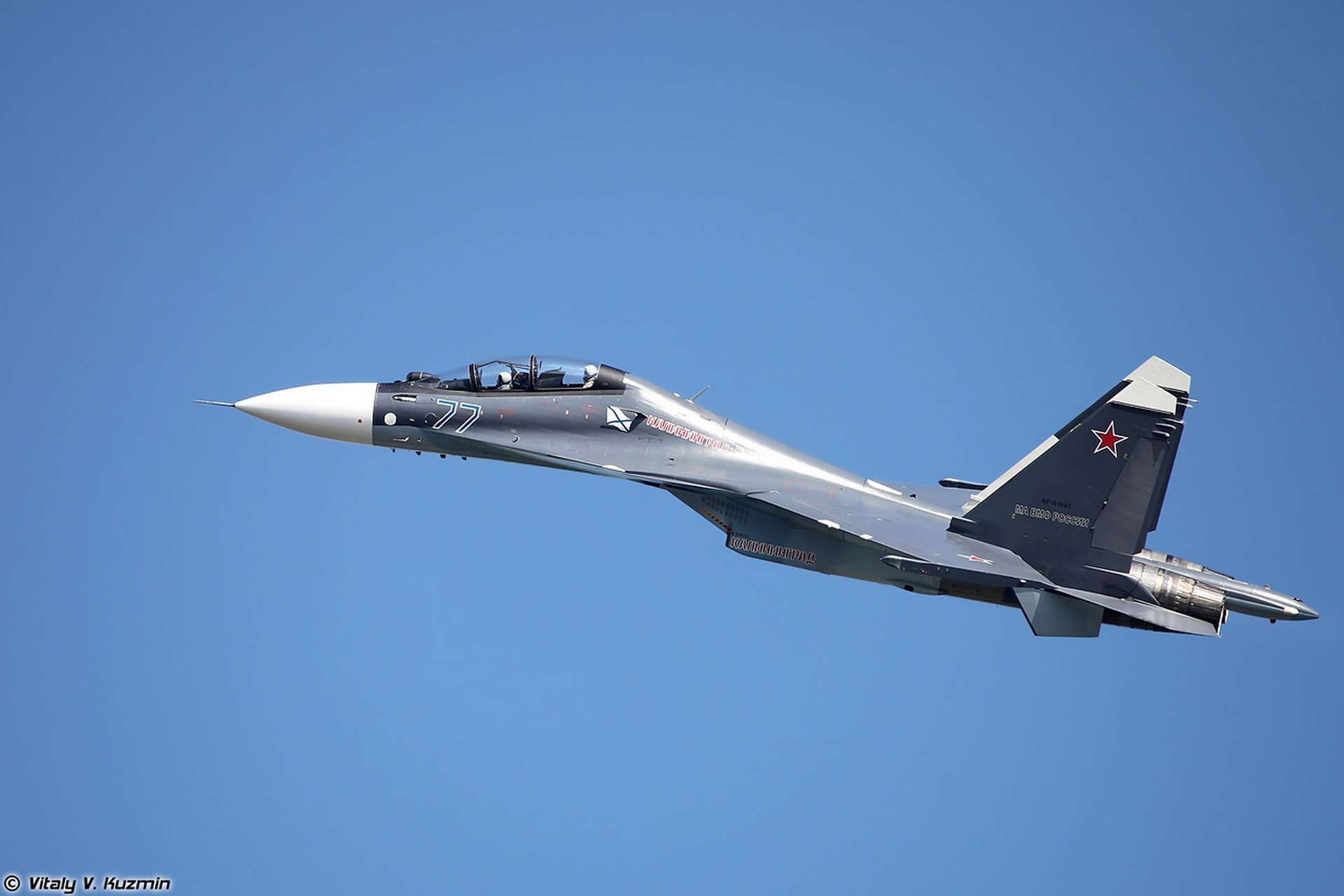Breaking news
Russia Equips Su-30SM Multirole Aircraft for First Time with Long-Range R-37M Missiles in Ukraine.
On May 22, 2024, the Russian Ministry of Defense reported the detection of unmanned enemy boats near the coast of Crimea. In response, Su-30SM multirole maritime fighters from the Russian Navy's Black Sea Fleet were deployed, equipped for the first time with long-range R-37M missiles.
Follow Army Recognition on Google News at this link

A Russian Su-30SM equipped with long-range R-37M Missiles. (Picture source: Russian MoD)
While such operations have become routine in the context of the war in Ukraine, the armament of these Russian aircraft is noteworthy. Each Su-30SM was equipped with two long-range R-37M air-to-air missiles and two medium-range R-77-1 missiles. This marked the first public appearance of the Su-30SM variant carrying the R-37M, a missile previously exclusive to Su-35S fighters and MiG-31BM interceptors.
The R-77-1, a supersonic medium-range air-to-air missile, has been part of the Russian Air Force and Air Defense arsenal since 1994. Initially designed for the MiG-29, the R-77, and its variants have since been integrated into various combat aircraft within Russia's operational-tactical aviation and Aerospace Forces. The missile's "fire and forget" capability allows pilots to launch it without maintaining guidance, with a range of over 100 kilometers. However, the highlight here is the demonstration of the R-37M, the long-range guided air-to-air missile. This Soviet-Russian missile can engage targets at distances up to 300 kilometers.

The Russian R-37M is also known by its NATO reporting name AA-13 Axehead. ( Picture Source: Wikimedia)
The R-37M, also known by its NATO reporting name AA-13 Axehead, is a long-range hypersonic air-to-air missile designed for beyond-visual range (BVR) combat. It has been in service since 2019 with the Russian Aerospace Forces. Its development began in the 1980s under the direction of the Tactical Missiles Corporation, and it is manufactured by Vympel MKB. The R-37M was first produced in 1985 and is also available under the export designation RVV-BD.
With a mass of 510 kilograms and a length of 4.06 meters, the R-37M is equipped with a fragmentation explosive warhead weighing 60 kilograms. It uses a boost-sustain solid rocket fuel, allowing the missile to reach a maximum speed of Mach 6, or approximately 7,400 km/h. The export version (RVV-BD) reaches a speed of 2,500 km/h.
The R-37M is distinguished by its impressive operational range, varying from 150 to 400 kilometers, although the export version is limited to 200 kilometers. This missile employs an inertial guidance system with mid-course updates and semi-active and active radar homing, ensuring high accuracy over long distances.

The Su-30SM is a multi-role fighter aircraft developed for the Russian Air Force. ( Picture Source: Vitaly V.Kuzmin)
The Su-30SM is a multi-role fighter aircraft developed by the JSC Sukhoi Design Bureau for the Russian Air Force. Manufactured by the IRKUT Corporation, this fighter made its maiden flight in September 2012, and the first two units were delivered to the Russian Air Force in November of the same year. The Su-30SM is an advanced variant of the Su-30MK combat aircraft family, which is in service with several air forces worldwide.
Designed according to the specifications of the Russian Air Force, the Su-30SM is intended to replace the Su-24 fleet. It can be deployed for air, land, and sea strike missions and is capable of conducting electronic countermeasures and command and control operations within a fleet of combat aircraft on joint missions.
The Su-30SM features a titanium and high-strength aluminum alloy structure, derived from the Su-30MKI. The fuselage houses the cockpit, radar sections, and avionics bay. Its aerodynamics and thrust vectoring capability provide high maneuverability.
The glass cockpit, configured in tandem for two pilots, integrates an advanced avionics suite with a head-up display and liquid crystal multifunction displays. It includes friend-or-foe identification equipment, a global positioning system, and an inertial navigation system. The open architecture allows the integration of modern avionics, including a new radar and communication system.
The Su-30SM can carry an advanced weapons payload of up to 8 tons, including machine guns, bombs, air-to-air missiles, and anti-ship missiles. The Su-30SM can engage aerial threats, ground, and naval surface targets with a variety of guided and unguided weapons.
Powered by two AL-31FP turbofan engines, the Su-30SM reaches a speed of Mach 2 and has a maximum unrefueled flight range of 3,000 km with an endurance of 3.5 hours. It is also equipped with an in-flight refueling probe and system. The tricycle landing gear is hydraulically retractable, with carbon disc brakes featuring electric cooling fans and an anti-skid mechanism. The brake parachute compartment is integrated into the tail cone.
This operation highlights the flexibility of the Russian Air Force, with some Russian media suggesting that this event underscores the readiness of Russian aircraft to face future F-16s.


























